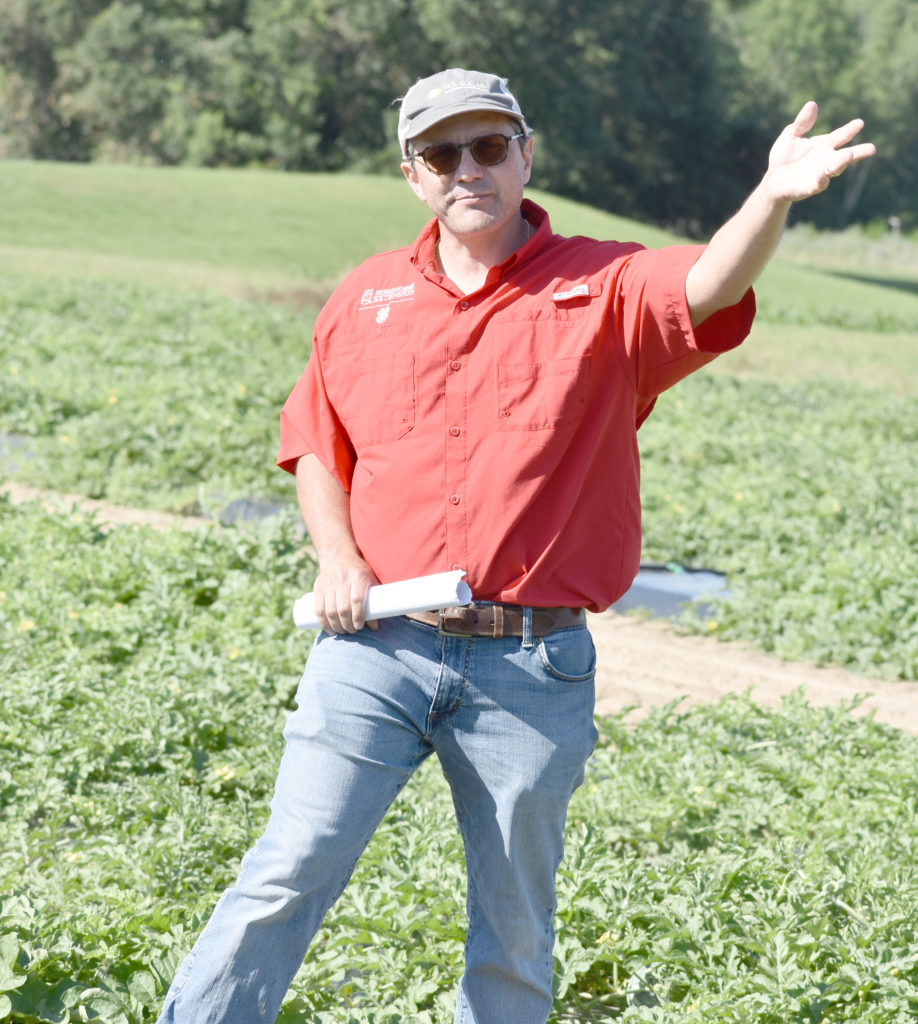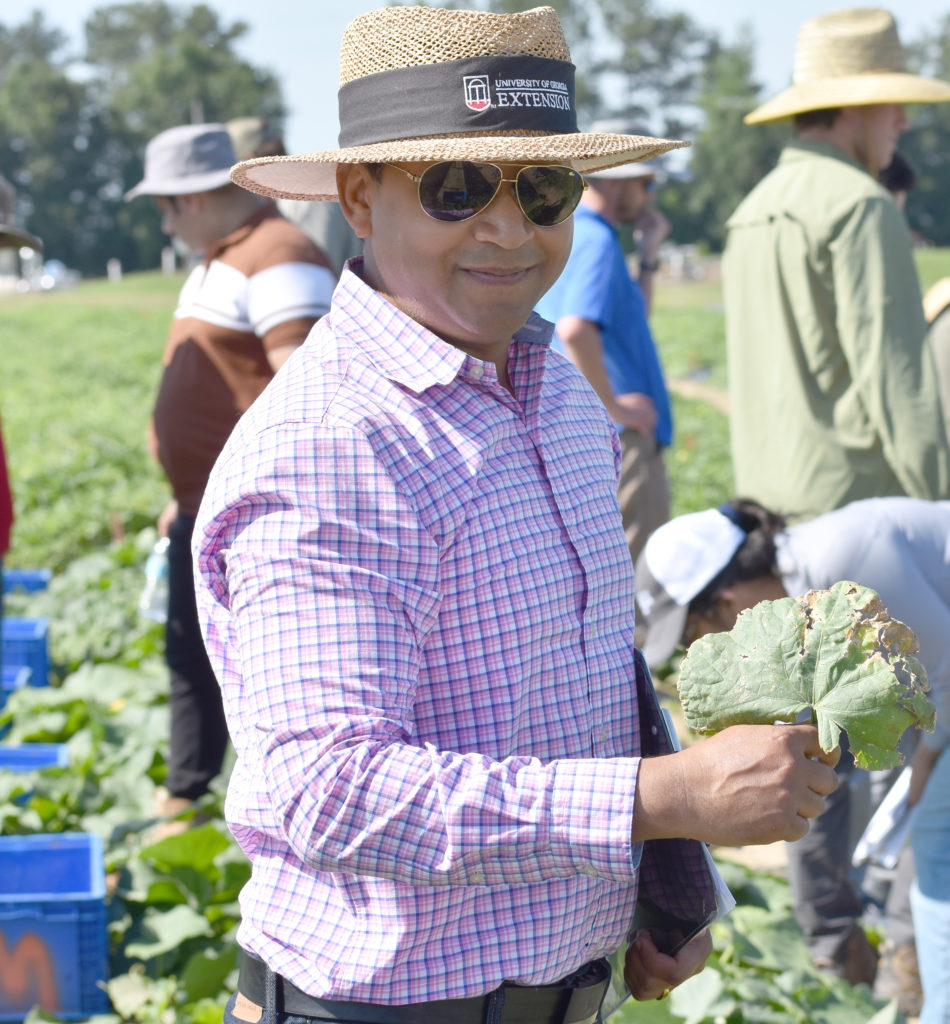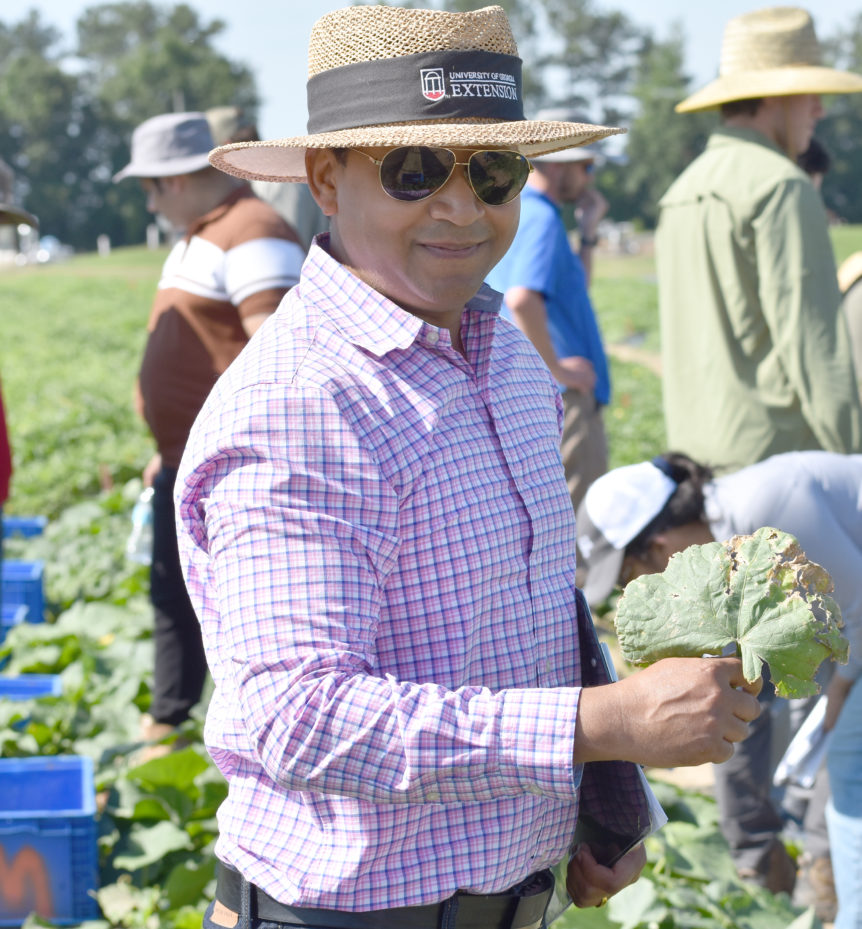
By Clint Thompson
University of Georgia (UGA) research into anthracnose’s impact in cucurbits has one scientist studying disease resistance from multiple angles.
“My part of the research is screening cucumber and watermelon varieties for resistance against anthracnose. There’s already resistant varieties for anthracnose race 1,” said Ted McAvoy, UGA Extension vegetable specialist. “If that’s the race we have, they should be resistant. If we have more severe strains or different strains, we might not have resistance.”
Disease Background
The threat of additional strains of anthracnose is significant because of its impact on cucurbits in the Southeast. The disease primarily impacts cucumbers and watermelons, but other cucurbits can also serve as hosts. Its symptoms consist of leaf spots, defoliation and an occasional fruit lesion. It can also spread in the fruit bins after harvest, which makes it more difficult to control.

“It’s becoming more of a problem. They’ve been seeing more and more samples coming through the Diagnostic Clinic. What they’ve seen from screenings is that anthracnose is becoming resistant to certain fungicides that were the standard,” McAvoy said. “Anthracnose is becoming resistant to Quadris. We’re seeing more of it. We’re seeing resistance to fungicides.”
Irrigation Timing
McAvoy is also studying irrigation timing, comparing disease development in the morning, midday and evening.
“Most of our watermelon acreage is on center pivots, small plastic, overhead irrigation. We’re looking at watering it in the morning, midday or afternoon to see if irrigation timing reduces or exacerbates anthracnose,” McAvoy said. “This is going to be the second year, but last year, the morning (timing) was the best and midday was the worst and end of the day was in between. My thoughts are we already have dew in the morning, and the plants are already wet. If you’re watering in the morning, you’re not wetting the foliage because it’s already wet. If you’re watering midday, you’re getting them wet again before they have time to dry out.”
McAvoy estimated that 80% to 90% of watermelons are produced under overhead irrigation. UGA recommends that they be grown under a seven-year rotation, due to the ongoing battle with fusarium wilt. This leads them to be grown on land that produces agronomic crops which has access to center pivot irrigation.










